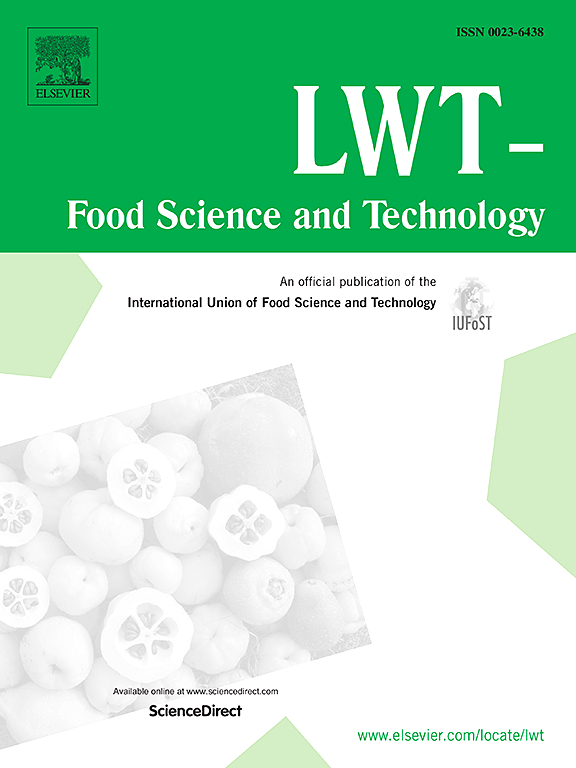Effect of biological enzyme pretreatment on the kinetics, microstructure, and quality of vacuum drying of wolfberry
IF 6
1区 农林科学
Q1 FOOD SCIENCE & TECHNOLOGY
引用次数: 0
Abstract
To explore the feasibility of enzyme pretreatment for optimizing the drying process of wolfberry, enzyme dewaxing pretreatment was used in this study firstly to enhance the vacuum drying rate and quality of wolfberry. This study investigated the effects of four single enzymes and a mixture of enzymes for dewaxing on the color, polysaccharides, flavonoids, total phenolics, and antioxidant capacity of wolfberry vacuum drying treatment. Compared to the untreated samples, the mixed enzyme treatment group exhibited a 57.29% reduction in drying time and a decrease in activation energy from 27.48 kJ/mol to 25.56 kJ/mol. Additionally, it demonstrated the highest rehydration rate, polysaccharide content, total phenolic content (TPC), total flavonoid content (TFC), and DPPH radical scavenging activity, as well as the smallest color difference and water activity. Scanning electron microscopy revealed that these characteristics originate from the most pore microstructure. By selectively breaking down the wax layer, higher connectivity pores are formed to facilitate water migration and evaporation. The optimal process for enzyme dewaxing pretreatment is Pectinase + Cutinase, with a temperature of 50 °C and a soaking time of 30 min.
求助全文
约1分钟内获得全文
求助全文
来源期刊

LWT - Food Science and Technology
工程技术-食品科技
CiteScore
11.80
自引率
6.70%
发文量
1724
审稿时长
65 days
期刊介绍:
LWT - Food Science and Technology is an international journal that publishes innovative papers in the fields of food chemistry, biochemistry, microbiology, technology and nutrition. The work described should be innovative either in the approach or in the methods used. The significance of the results either for the science community or for the food industry must also be specified. Contributions written in English are welcomed in the form of review articles, short reviews, research papers, and research notes. Papers featuring animal trials and cell cultures are outside the scope of the journal and will not be considered for publication.
 求助内容:
求助内容: 应助结果提醒方式:
应助结果提醒方式:


